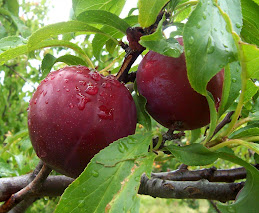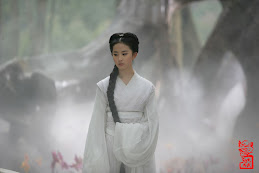 PHOTO: WT210 Power Meter
PHOTO: WT210 Power Meter
Yokogawa WT200 Model 253421 is a Single Phase Digital Power Meter for Measuring Voltage, Current, Power, Power Factor, Frequency and Harmonics.http://tmi.yokogawa.com/images/uploaded/WT210_F.2jpg.jpg
 PHOTO: Meter display after 1 minute of standby power measurement
PHOTO: Meter display after 1 minute of standby power measurement
Explanation
The measurement of the low standby power is difficult when using the meter's normal power (WATT) mode. The WATT reading will be jumping erratically and is almost impossible to obtain an accurate value.
The Wh (WATT hour) method allows a more accurate and easier way to measure the standby power.
The amount of energy used during standby mode is measured in Wh for one minute. The Wh reading is converted into joules and divided by 60 seconds, to obtain the power (joules/second).
Note: POWER (WATT) is the rate of flow of energy. 1 Watt is the flow of 1 joule of energy for 1 second.

Referring to the measurement display reading above, the amount of energy used for 1 minute = 5.2365 mWh.
Divide by 1000 to obtain Wh, = (5.2365 ÷ 1000) Wh
Wh (WATT hour) is an unit of energy, equal to the work done by one watt acting for one hour and equivalent to 3,600 joules.
Therefore for 1 minute,
(5.2365 ÷ 1000) Wh
= (5.2365 ÷ 1000) x 3,600 joules
= (5.2365 ÷ 1000) x 60 x 60 joules
1 minute the standby energy used = (5.2365 ÷ 1000) x 60 x 60 joules
Hence, 1 second the standby energy used
= [(5.2365 ÷ 1000) x 60 x 60] ÷ 60 joules
= [(5.2365 ÷ 1000) x 60] joules
Power is defined as the number of joules per second.
Therefore the Standby Power consumption = (5.2365 ÷ 1000) x 60 WATT
In general, to obtain the power, the mWh reading for one minute is divided by 1000 to get Wh, and multiply by 60 to obtain the WATT.
Theory
From: http://tmi.yokogawa.com/products/digital-power-analyzers/digital-power-analyzers/wt210wt230-digital-power-meters/ Yokogawa WT210/WT230 Single Phase Digital Power Meter
Yokogawa WT210/WT230 Single Phase Digital Power Meter
The WT210/WT230 has five times the high-frequency range and approximately twice the basic accuracy as the previous generations plus a high-speed data acquisition rate and a compact design make this digital power meter highly desirable.
What's New:
The WT210 is an Accepted Device by Standard Performance Evaluation Corporation (SPEC) used for Power Efficiency Benchmarking.
From: http://www.answers.com/topic/watt-hour
Wh or W-hr
A unit of energy, especially electrical energy, equal to the work done by one watt acting for one hour and equivalent to 3,600 joules.
Example 1:
If the Wh after 1 hour is 1, then the power is 1 watt.
In terms of joules,
1Wh = 1 x 60 x 60 joules = 3,600 joules
1Ws = [3,600 ÷ (60 x 60)] joules = 1 watt (or 1 joule per second)
Example 2:
If the Wh after 1 hour is 0.165, then the power is 0.165 watt.
In terms of joules,
1Wh = 0.165 x 60 x 60 joules = 594 joules
1Ws = [594 ÷ (60 x 60)] joules = 0.165 watt (or 0.165 joules per second)
Example 3:
If the Wh after 1 min is 2.7417 mWh, then the Wh after 1 hour is (2.7417 x 60) mWh = (2.7417 x 60) ÷ 1000 Wh = 0.165 and that is the power.
From: http://en.wikipedia.org/wiki/Watt
The watt (pronounced /wɒt/) is a derived unit of power in the International System of Units (SI), named after the Scottish engineer James Watt (1736–1819). Its unit symbol is W. The unit measures the rate of energy conversion.
* One watt is equal to 1 joule (J) of energy per second.
* In terms of mechanical energy, one watt is the rate at which work is done when an object is moved at a speed of one meter per second against a force of one newton.
1W = 1Js-1 = 1kgm2s-3 = 1Nms-1
* By the definitions of the units for measuring electric potential (volt) and current (ampere), work is done at a rate of one watt when one ampere flows through a potential difference of one volt.
1W = 1V × 1A
From: http://www.vendian.org/envelope/TemporaryURL/energy_other.html
Conversions to joules
| unit |
|
|
|
|
|
|
| joules |
|
|
|
|
|
|
|
|
|---|
| W·s |
|
|
|
|
|
|
| 100 |
|
|
|
|
|
|
| exact |
|
|
|
|
|
| watt second |
| W·h |
|
|
|
|
|
|
| 104 × 0.36 |
|
|
|
|
|
|
| exact |
|
|
|
|
|
| watt hour |
| kW·h |
|
|
|
|
|
|
| 107 × 0.36 |
|
|
|
|
|
|
| exact |
|
|
|
|
|
| kilowatt hour |
Confusion of watts, watt-hours, and watts per hour
Power and energy are frequently confused. Power is the rate at which energy is generated and consumed.
For example, when a light bulb with a power rating of 100W is turned on for one hour, the energy used is 100 watt-hours (W·h), 0.1 kilowatt-hour, or 360 kJ.
This same amount of energy would light a 40-watt bulb for 2.5 hours, or a 50-watt bulb for 2 hours.
A power station would be rated in multiples of watts, but its annual energy sales would be in multiples of watt-hours. A kilowatt-hour is the amount of energy equivalent to a steady power of 1 kilowatt running for 1 hour, or 3.6 MJ.
Reference







































.jpg)
.gif)
.jpg)
























































